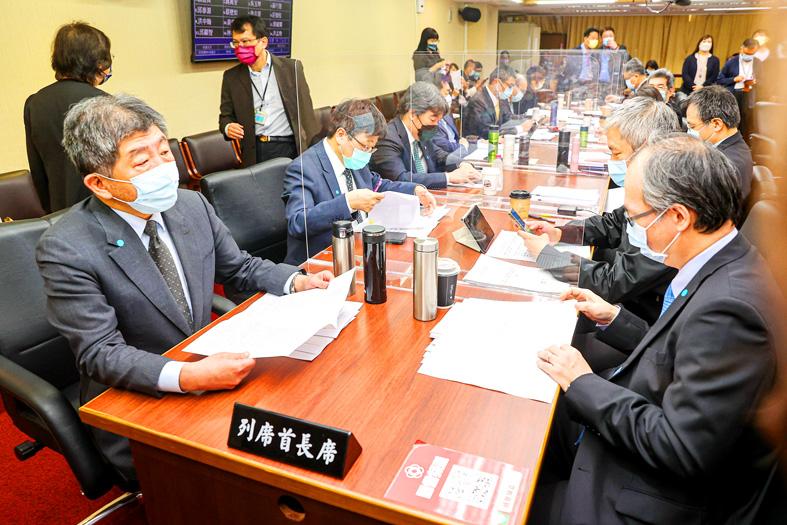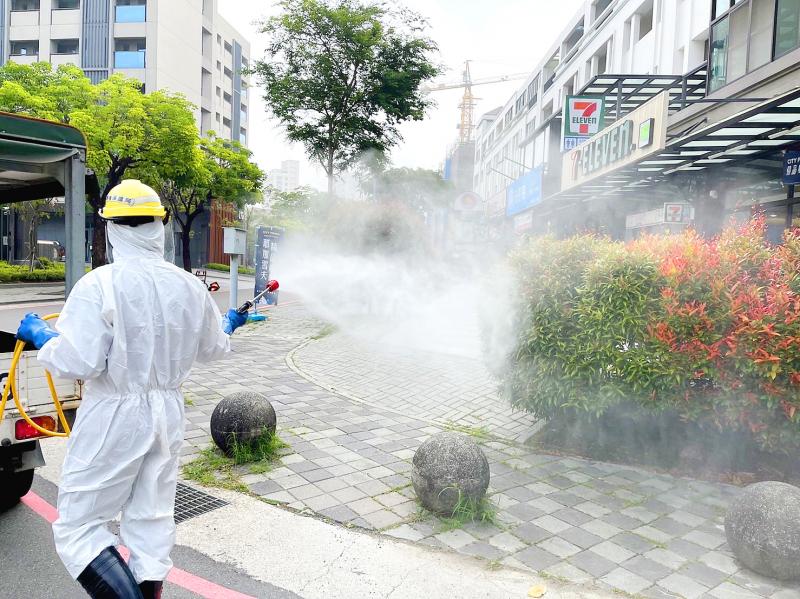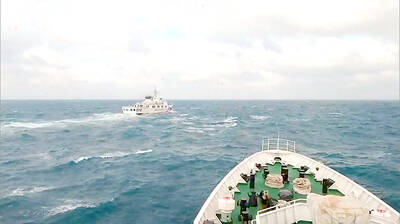The Ministry of Health and Welfare yesterday launched a new pandemic response strategy to mark the government’s departure from a “zero COVID-19” policy.
The revised strategy — billed as the “new Taiwanese model” and authorized by Premier Su Tseng-chang (蘇貞昌) at a meeting earlier in the day — would no longer focus on total suppression, Centers for Disease Control Deputy Director-General Chuang Jen-hsiang (莊人祥) told a news conference in Taipei.
The shift in priorities was prompted by the nature of the Omicron variant of SARS-CoV-2, which produces milder to no symptoms in infected people, to mitigate health risks to communities, reduce the burden on the medical system and maintain a normal life, Chuang cited Su as saying.

Photo: CNA
Only five people who have contracted COVID-19 this year developed moderate or severe symptoms, while 99.7 percent reported mild or no symptoms, Su said.
This means that health officials can shift gears to mitigating the effects of the pandemic, but the new model is not the same as “living with COVID-19,” as the virus would not be allowed to spread unchecked, Su said.
The strategy is to be implemented under the principle of allowing people to live normal lives, active prevention of the virus’ spread and a stable reopening of the economy, striking a balance between maintaining public health and economic well-being, he added.

Photo courtesy of the Tainan City Government
More incentives should also be offered to encourage people to take a third COVID-19 jab, he said, adding that the public’s ability to remain vigilant and take necessary measures to protect their health is a key part of the new model.
Meanwhile, the Central Epidemic Command Center (CECC) yesterday reported 531 new cases of COVID-19 — 382 domestically transmitted and 149 imported.
The local case count exceeded 100 for the seventh consecutive day and was the highest daily number this year, breaking the previous high of 281 recorded on Wednesday.
New Taipei City had the most cases at 111, followed by Taipei with 87 and Kaohsiung with 59, the CECC said.
Of the 149 imported cases, 78 were travelers who tested positive on arrival, it said.
Minister of Health and Welfare Chen Shih-chung (陳時中) announced plans to procure additional supplies of the antiviral COVID-19 drug Paxlovid from Pfizer.
While Paxlovid is hard to get hold of, the government plans to procure at least 100,000 more courses, Chen told a legislative committee meeting, adding that negotiations with Pfizer were ongoing.
Earlier this year, Taiwan signed a deal with Pfizer to procure 20,000 courses of Paxlovid, with the first batch — 3,200 courses — arriving on Jan. 27, Chen said, adding that about 15,000 courses have yet to be delivered.
Taiwan has ordered a combined total of 25,000 courses of Paxlovid and Molnupiravir from drugmaker Merck, he added.
The CECC is to hold discussions next week on guidelines for people with light symptoms to quarantine at home, Chen said.
There are several issues that need to be addressed before such a policy can be implemented, he said, citing as an example how patients can receive appropriate care during home quarantine.
Although Taiwan has a smart healthcare platform in place, providing remote health services on a large scale is an issue, he said.

Auckland rang in 2026 with a downtown fireworks display launched from New Zealand’s tallest structure, Sky Tower, making it the first major city to greet the new year at a celebration dampened by rain, while crowds in Taipei braved the elements to watch Taipei 101’s display. South Pacific countries are the first to bid farewell to 2025. Clocks struck midnight in Auckland, with a population of 1.7 million, 18 hours before the famous ball was to drop in New York’s Times Square. The five-minute display involved 3,500 fireworks launched from the 240m Sky Tower. Smaller community events were canceled across New Zealand’s

The Ministry of Foreign Affairs (MOFA) yesterday said it is closely monitoring developments in Venezuela, and would continue to cooperate with democratic allies and work together for regional and global security, stability, and prosperity. The remarks came after the US on Saturday launched a series of airstrikes in Venezuela and kidnapped Venezuelan President Nicolas Maduro, who was later flown to New York along with his wife. The pair face US charges related to drug trafficking and alleged cooperation with gangs designated as terrorist organizations. Maduro has denied the allegations. The ministry said that it is closely monitoring the political and economic situation

‘SLICING METHOD’: In the event of a blockade, the China Coast Guard would intercept Taiwanese ships while its navy would seek to deter foreign intervention China’s military drills around Taiwan this week signaled potential strategies to cut the nation off from energy supplies and foreign military assistance, a US think tank report said. The Chinese People’s Liberation Army (PLA) conducted what it called “Justice Mission 2025” exercises from Monday to Tuesday in five maritime zones and airspace around Taiwan, calling them a warning to “Taiwanese independence” forces. In a report released on Wednesday, the Institute for the Study of War said the exercises effectively simulated blocking shipping routes to major port cities, including Kaohsiung, Keelung and Hualien. Taiwan would be highly vulnerable under such a blockade, because it

UNRELENTING: China attempted cyberattacks on Taiwan’s critical infrastructure 2.63 million times per day last year, up from 1.23 million in 2023, the NSB said China’s cyberarmy has long engaged in cyberattacks against Taiwan’s critical infrastructure, employing diverse and evolving tactics, the National Security Bureau (NSB) said yesterday, adding that cyberattacks on critical energy infrastructure last year increased 10-fold compared with the previous year. The NSB yesterday released a report titled Analysis on China’s Cyber Threats to Taiwan’s Critical Infrastructure in 2025, outlining the number of cyberattacks, major tactics and hacker groups. Taiwan’s national intelligence community identified a large number of cybersecurity incidents last year, the bureau said in a statement. China’s cyberarmy last year launched an average of 2.63 million intrusion attempts per day targeting Taiwan’s critical